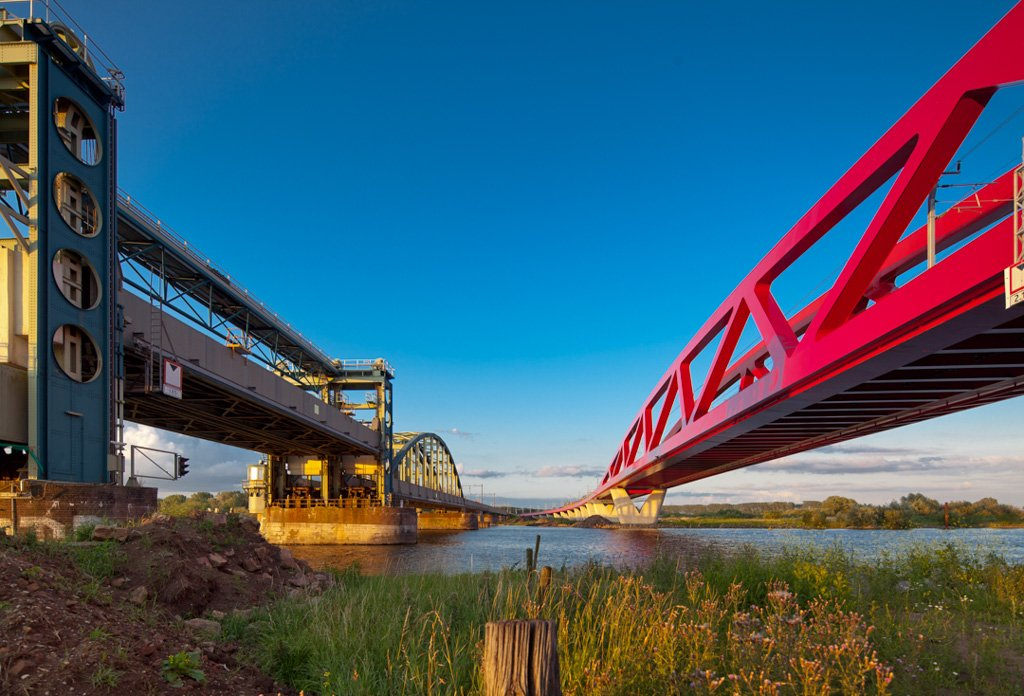Integrated Infrastructure Design
CT-MI-186
This minor offers students a comprehensive and interrelated set of courses focusing on the integrated design of transport and water infrastructures such as bridges, fly-overs, underpasses, dikes, routes, railway- and metro stations. The focus is not only on technical challenges for an infrastructural object, such as function, construction and materials, but also on the architectural form, the system integration into the transport and/or waterway networks, and on the spatial integration into an urban or natural environment.

Minor code: CT-MI-186 Language: English Max. participants: 30
| |||||
For whom?
- Dedicated and motivated BSc students at TU Delft to further their knowledge of infrastructures and integrated design and to develop skills on design, (3D ) drawing & modelling, communication, presentation and multidisciplinary collaboration.
- Dedicated and motivated BSc students from other universities with an interest in infrastructure and integrated design to further their knowledge of infrastructures and integrated design and to develop skills on design, (3D) drawing & modelling, communication, presentation and multidisciplinary collaboration.
- Dedicated and motivated students from universities of applied sciences with an interest in infrastructure and integrated design who want to orientate themselves in this field with a future enrollment in mind for a design master or specialization at TU Delft .
The minor courses will be taught in English, so good English language skills are required.
What will you learn
The minor starts with a comprehensive introduction to various objects of integrally-designed transport and water infrastructures and their historical development and environmental context. Also a broad range of design perspectives and approaches will be introduced to get familiar with analytical and problem solving-methods and techniques. As part of this course students have to write an essay from a theoretic point of view about an infrastructure and its integrality.
Central to the minor is the design course with in-depth design exercises for bridges, fly-overs, underpasses and route-design on different scales and levels of complexity. In this course students' design, collaboration and presentation skills will be stimulated and developed by multidisciplinary teamwork within a studio setting.
Other courses delve into; present and future issues about mobility and flood protection, design challenges for transport and water infrastructures within the context of contemporary urban and landscape (design-technical) conditions; infrastructure planning and governance; and into the idiosyncrasy of (infra-)structures from a reverse-engineering perspective.
All previous courses prepare and lead to the final project where students work, as multidisciplinary teams within a studio setting, on an assignment by a commissioner from practice to resolve a complex infrastructure design issue in a real-world context. Examples are the (re)design of a large bridge or a multimodal transport hub and its integration into the urban transport system and into the public space. Apart from the design of the object and its integration also ideas for the added value in a social and economic sense, and options to finance the infrastructure shall be developed.
Design and engineering students with interest in infrastructures, integrated design and multidisciplinary teamwork, can use this minor to further their ambitions in becoming a designer/engineer. For architecture and civil engineering students in particular the minor offers actual assignments from practice which familiarize you with issues and demands relevant for your future professional orientation:
- who better understands different design and disciplinary perspectives,
- who is capable to analyze assignments, technical requirements and environmental conditions and translate these into design objectives and criteria, who is creative to develop design alternatives , who can give design decisions a solid ground on basis of a multi-criteria analysis and convincing arguments, and who can present an integrated (3D) design with an attractive architectural expression and with elaborated technical details,
- who can work within a multidisciplinary team,
- and who ultimately contribute to an innovative, attractive and integrated design.
This minor is affiliated to the Deltas, Infrastructures & Mobility Initiative (DIMI) as one of the four spearheads of TU Delft on societal challenges
Course overview
Why?
- The minor offers you a comprehensive and coherent programme with interrelated courses.
- Combines theory and practice for integrated design of transport and water infrastructures.
- Explores societal issues and contexts and teaches you to design innovative solutions on different scales from a variety of perspectives and various disciplines.
- Lecturers from academia and professionals from practice.
- Stimulates multidisciplinary team work in a studio setting.
- Develops your understanding of actual infrastructure design and your design skills in an interfaculty, multidisciplinary and collaborative context.
Contact
“This minor presents students with a unique opportunity to become a designer / engineer in the challenging practice of integrated infrastructure, where urgent societal issues in the domains of mobility and transport, water and the environment can contribute to better built and natural environments.”
Marcel Hertogh
Challenges
- How do we create commitment from stakeholders for large infrastructural interventions?
- Can design also create new spatial conditions and add societal, economic and environmental value?
- Will current infrastructure address future activities, developments and conditions?
